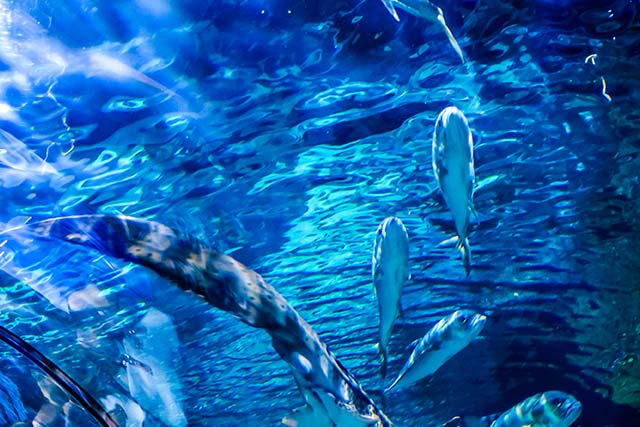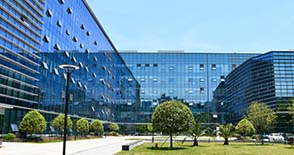Yeast cell wall is the most widely studied and applied immuno-enhancer at present. It can improve the immunity of animals, enhance their resistance to bacteria, fungi, viruses and parasites, reduce adverse stress, and improve the production performance of animals. The use of yeast cell wall in aquatic animals has the advantages of safety, high efficiency, low toxicity, no residue, no drug resistance and low cost, so it is of great significance to the healthy development of aquaculture industry.
The active components of yeast cell wall are mainly composed of β-Glucan, Mannan Oligosaccharides (MOS), glycoprotein and chitin. The content of main components in the Yeast cell wall(Table 1).
Table 1 The content of main components in the Yeast cell wall

β- Glucan is a kind of polysaccharide with special structure, usually composed of 10-20 monosaccharides, with molecular weight of about 6500-7500, and most of them are water insoluble or colloidal particles. In yeast cell wall, the monosaccharide of β- Glucan connect between β- 1,3 keys and β- 1, 6 keys. Due to the special bonding mode and the existence of molecular hydrogen bond, β- Glucan has a helical molecular structure, and its special configuration has a strong stimulating effect on the immune system of animals. β- Glucan can directly bind to specific fungal polysaccharide receptors (SR, TLRs, Dectin-1, CR3) on the surface of monocytes, macrophages, neutrophils, and natural killer cells (NK) to produce a series of immune reactions (Miao Yue et al., 2017). Unlike fish, the serum of crustaceans and shellfish β- Glucan binding receptor -- β- Glucan-binding protein (BGBP) can promote the release of serine from lymphoid granulosa cells, and serine can activate the phenol oxidase system, and oxidize pro-phenol oxidase (proPO) to phenol oxidase, which can oxidize phenol to quinone, and finally synthesize melanin in vivo, Active substances such as quinone and melanin can directly participate in a series of immune defense reactions of crustaceans and shellfish (Sun , 2007; Zhao at al., 2009).
Mannan oligosaccharides are mainly composed of disaccharides, trisaccharides and tetrasaccharides α- (1,2), (1,3) and α- 1, 6 keys. Like many feed fibers, mannan oligosaccharides contain a large number of chemical bonds that cannot be cut off by digestive enzymes. They can hardly be digested and utilized in the small intestine and enter the digestive tract for concentration. They can also be selectively fermented and utilized by beneficial bacteria such as bifidobacteria and lactic acid bacteria in the animal digestive tract flora, and release or participate in metabolism in the form of organic acids, CH4, CO2 and H2 to provide energy. At the same time, the acidic substances produced during the proliferation of beneficial bacteria reduce the pH of the whole intestine and inhibit the growth of harmful bacteria (Xu et al., 2013). In addition, oligosaccharides can effectively combine with some pathogenic bacteria, so that the pathogenic bacteria do not contact with the intestinal epithelial cells of animals, so that the pathogenic bacteria cannot be fixed in the intestine, and thus lose their harmful effects on animals. The cell surface of many pathogenic bacteria contains a special protein for cell recognition, which can bind to the receptors on the surface of intestinal inner wall cells and adhere to the epithelial cells for reproduction. After the addition of oligosaccharides, they will competitively combine with exogenous lectins on the surface of pathogenic bacteria cells, prevent the adhesion of pathogenic bacteria on the intestinal epithelium, and reduce the number of intestinal pathogenic bacteria (Spring and Privulescu, 1998).
Recently, Angel yeast and Sichuan Polytechnic University to carry out experimental research found the effect of different YCW content (0μg/mL、125μg/mL、250μg/mL、500μg/mL) on the activity,respiratory bursts,IL-1β and TNF-α mRNA expressions of channel catfish macrophages are different(Table 2). Compared with the non YCW group, YCW group could the survival rate of macrophages in channel catfish was improved (P>0.05), the iNOS activity of channel catfish macrophages was significantly increased by 125 μg/mL YCW、500 μg/mL YCW and 500 μg/mL YCW, and YCW activated macrophage expression of IL-1β and TNF-α in a dose-dependent manner.In the present study, YCW (at concentrations less than 500 μg/mL) appeared to increase the viability of macrophages, to enhance respiratory bursts from macrophages, thereby promotingmacrophage phagocytosis and increasing the mRNA expression of IL-1β and TNF-α.
Table 2 The effects of YCW on the activity,respiratory bursts,IL-1β and TNF-α mRNA expressions of channel catfish macrophages

In a word, yeast cell wall has the function of improving the non-specific immunity of the body. As an immune enhancer, it can improve the current situation of healthy aquaculture of aquatic products, and has a very broad application prospect in the modern aquaculture industry with high incidence of diseases and diverse stressors.
 | Published by Wang Qin Engineer of Animal Nutrition Division |
About Angel Animal Nutrition:
Fubon is a brand of Angel Animal Nutrition. Fubon is committed to developing natural, efficient microbial feed derived from yeast with Angel's leading technology in yeast industry, providing the best service solutions for the nutrition and health in animals. Angel Animal Nutrition creates value for global feed and animal agriculture customers through continuously upgraded products and professional services.
About Angel:
Angel Yeast Company is a high-tech listed company specializing in yeast and biotech. Product business covers Yeast and Baking, Yeast Extract-Savoury, Nutrition & Health and Biotechnology fields. It is one of the world's leading companies in the yeast industry. Angel has 12 holding subsidiaries and provides products and services for more than 150 countries and regions.
Press Contact:
ANGEL YEAST CO.,LTD
Address: 168 Chengdong Avenue, Yichang, Hubei 443003, P. R.China
Tel:+86-717-6369520, 6369558
Fax:+86-717-6370680
Email: aie@angelyeast.com







